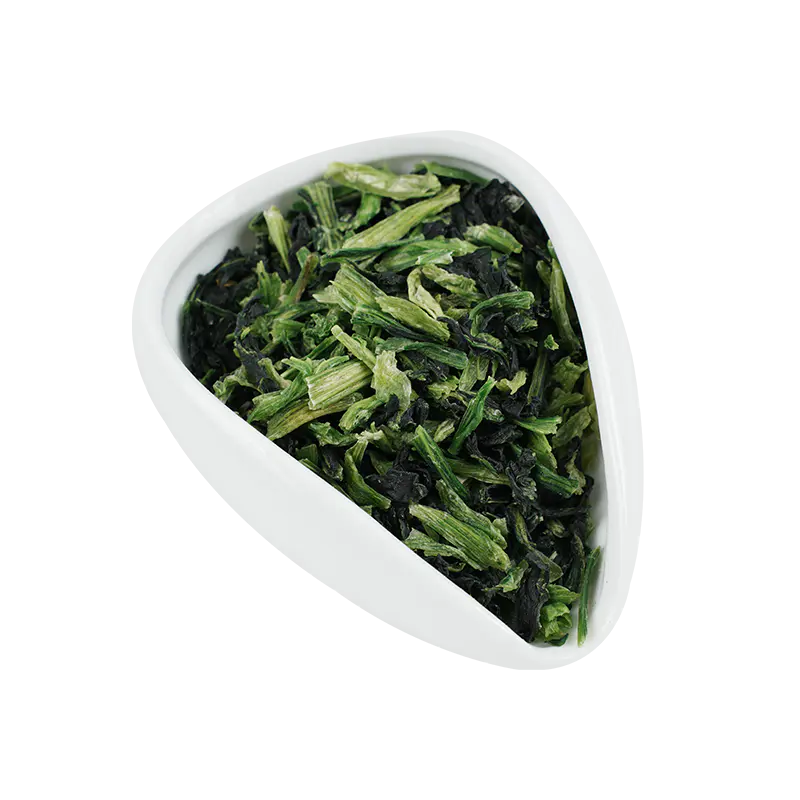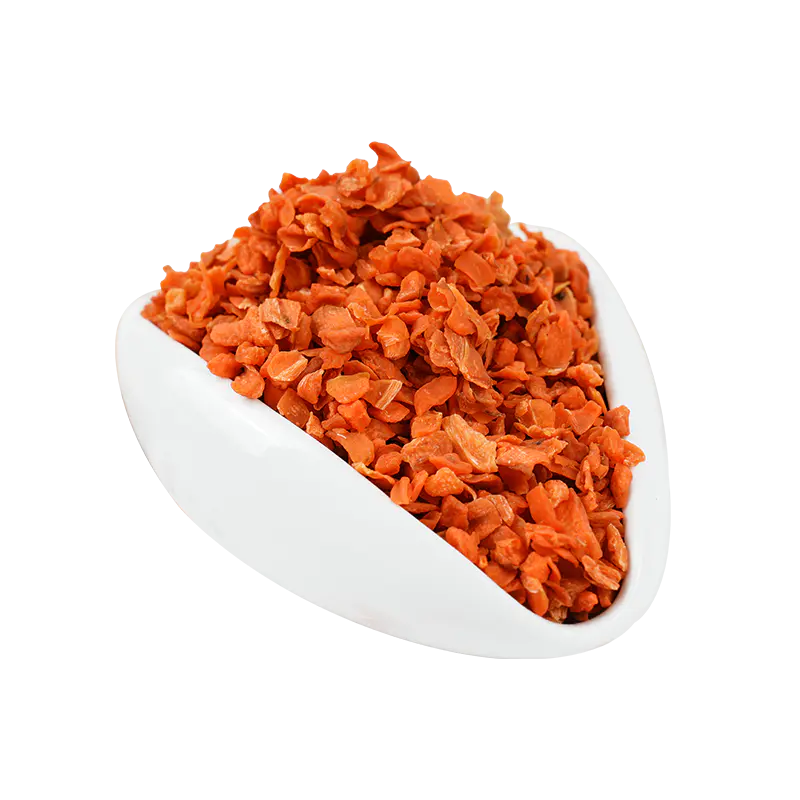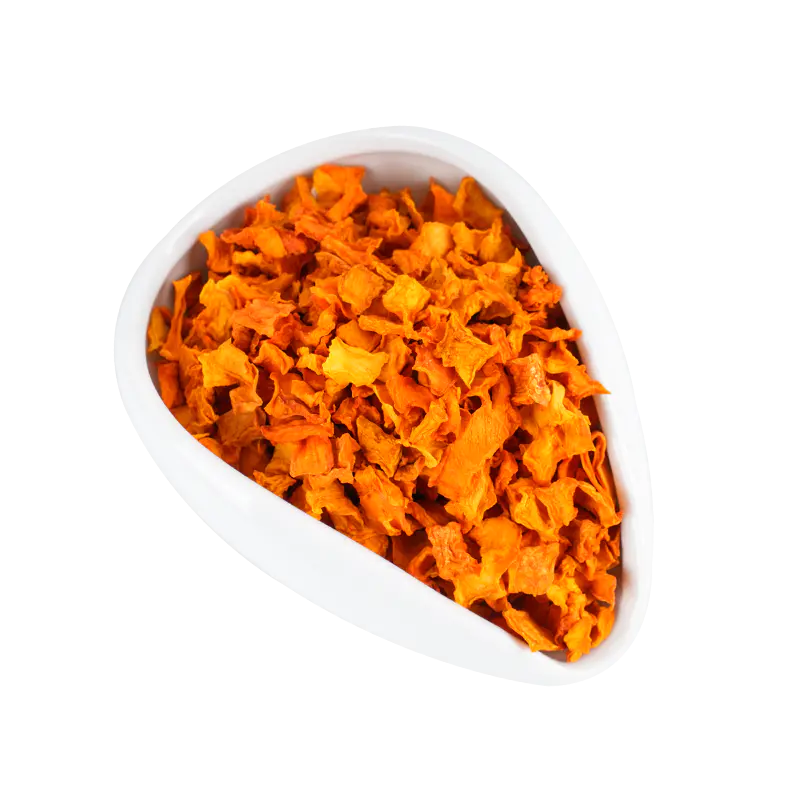Dehydrated green onions are highly versatile and can be used in various culinary applications, offering a convenient and shelf-stable alternative to fresh green onions.
Soups and Stews:
Dehydrated green onions are an excellent addition to soups, broths, and stews. They rehydrate quickly when added to hot liquid, and their mild yet savory onion flavor infuses the dish without the need for fresh onions. Since fresh onions can lose flavor and texture after prolonged cooking, dehydrated green onions hold up better during longer cooking processes, providing a consistent, subtle flavor throughout. This makes them particularly useful in slow-cooked recipes, such as beef stew, chicken soup, and vegetable broths, where they can impart richness without the need for refrigeration.
Seasoning Blends:
Dehydrated green onions are often used as a key ingredient in homemade or commercially produced seasoning blends. These blends can be sprinkled over a variety of dishes or mixed into sauces, dips, or marinades. For example, they are frequently used in ranch seasoning, onion soup mix, and even BBQ rubs. Their concentrated flavor allows chefs and food manufacturers to create complex seasoning profiles without adding extra moisture or needing fresh ingredients that may have a short shelf life. They are also a great addition to taco seasoning, stir-fry mixes, or dry rubs for meats.
Instant Meals and Snack Foods:
One of the most popular applications of dehydrated green onions is in instant meals like ramen noodles, instant rice, and ready-to-heat meal kits. Dehydrated green onions offer the convenience of adding onion flavor to these meals without requiring fresh ingredients that could spoil or need refrigeration. Since dehydrated green onions can be stored for long periods, they are a go-to ingredient for quick meal solutions, such as microwaveable soups, dehydrated meal pouches, and even savory snack foods like flavored crackers and chips. They are perfect for these applications because they retain much of the original flavor and nutritional value, such as vitamins K and A, even after drying.
Dips and Spreads:
Dehydrated green onions are also a staple in various dip mixes and spreads, providing an easy way to enhance flavor. For instance, they are often used in ranch dip, onion dip, or guacamole seasoning blends. They can also be mixed into cream cheese spreads for bagels, sandwich spreads, or even in hummus and salsa for a tangy, onion-infused kick. The advantage of using dehydrated green onions is that they don’t contribute additional moisture to the mixture, keeping the consistency perfect. Rehydrating them briefly before adding to dips ensures they blend seamlessly with other ingredients, maintaining their fresh onion flavor.
Baked Goods:
Dehydrated green onions find their way into savory baked goods, where their mild onion flavor can elevate the product. For example, they are often incorporated into bread recipes, especially those for onion bread, cheese biscuits, or savory scones. Dehydrated green onions are ideal in these applications because they blend well into the dry ingredients and do not release excess moisture into the dough. They also add a visual appeal, creating small flecks of green in the final product, which makes the bread or biscuit more attractive and appetizing.
Frozen Foods:
Dehydrated green onions are frequently used in frozen food products, such as frozen vegetables, ready-to-eat dinners, and casseroles. Since dehydrated green onions do not require refrigeration and have a long shelf life, they are the perfect ingredient for frozen meals, where fresh ingredients might spoil or degrade in flavor over time. These onions rehydrate quickly when cooked in the microwave or oven, ensuring that the final dish retains a fresh, flavorful taste. Some frozen food manufacturers add dehydrated green onions to dishes like frozen fried rice, stir-fry vegetables, and frozen pasta dishes for added flavor and texture without compromising the product’s shelf life.

Dehydrated green onions are highly versatile and can be used in various culinary applications, offering a convenient and shelf-stable alternative to fresh green onions.
Soups and Stews:
Dehydrated green onions are an excellent addition to soups, broths, and stews. They rehydrate quickly when added to hot liquid, and their mild yet savory onion flavor infuses the dish without the need for fresh onions. Since fresh onions can lose flavor and texture after prolonged cooking, dehydrated green onions hold up better during longer cooking processes, providing a consistent, subtle flavor throughout. This makes them particularly useful in slow-cooked recipes, such as beef stew, chicken soup, and vegetable broths, where they can impart richness without the need for refrigeration.
Seasoning Blends:
Dehydrated green onions are often used as a key ingredient in homemade or commercially produced seasoning blends. These blends can be sprinkled over a variety of dishes or mixed into sauces, dips, or marinades. For example, they are frequently used in ranch seasoning, onion soup mix, and even BBQ rubs. Their concentrated flavor allows chefs and food manufacturers to create complex seasoning profiles without adding extra moisture or needing fresh ingredients that may have a short shelf life. They are also a great addition to taco seasoning, stir-fry mixes, or dry rubs for meats.
Instant Meals and Snack Foods:
One of the most popular applications of dehydrated green onions is in instant meals like ramen noodles, instant rice, and ready-to-heat meal kits. Dehydrated green onions offer the convenience of adding onion flavor to these meals without requiring fresh ingredients that could spoil or need refrigeration. Since dehydrated green onions can be stored for long periods, they are a go-to ingredient for quick meal solutions, such as microwaveable soups, dehydrated meal pouches, and even savory snack foods like flavored crackers and chips. They are perfect for these applications because they retain much of the original flavor and nutritional value, such as vitamins K and A, even after drying.
Dips and Spreads:
Dehydrated green onions are also a staple in various dip mixes and spreads, providing an easy way to enhance flavor. For instance, they are often used in ranch dip, onion dip, or guacamole seasoning blends. They can also be mixed into cream cheese spreads for bagels, sandwich spreads, or even in hummus and salsa for a tangy, onion-infused kick. The advantage of using dehydrated green onions is that they don’t contribute additional moisture to the mixture, keeping the consistency perfect. Rehydrating them briefly before adding to dips ensures they blend seamlessly with other ingredients, maintaining their fresh onion flavor.
Baked Goods:
Dehydrated green onions find their way into savory baked goods, where their mild onion flavor can elevate the product. For example, they are often incorporated into bread recipes, especially those for onion bread, cheese biscuits, or savory scones. Dehydrated green onions are ideal in these applications because they blend well into the dry ingredients and do not release excess moisture into the dough. They also add a visual appeal, creating small flecks of green in the final product, which makes the bread or biscuit more attractive and appetizing.
Frozen Foods:
Dehydrated green onions are frequently used in frozen food products, such as frozen vegetables, ready-to-eat dinners, and casseroles. Since dehydrated green onions do not require refrigeration and have a long shelf life, they are the perfect ingredient for frozen meals, where fresh ingredients might spoil or degrade in flavor over time. These onions rehydrate quickly when cooked in the microwave or oven, ensuring that the final dish retains a fresh, flavorful taste. Some frozen food manufacturers add dehydrated green onions to dishes like frozen fried rice, stir-fry vegetables, and frozen pasta dishes for added flavor and texture without compromising the product’s shelf life.

 English
English 中文简体
中文简体





 Xinqian Village (Dehydrated Fruit and Vegetable Industrial Park), Duotian Street, Xinghua City, Taizhou City, Jiangsu Province, China
Xinqian Village (Dehydrated Fruit and Vegetable Industrial Park), Duotian Street, Xinghua City, Taizhou City, Jiangsu Province, China +86-13852647168
+86-13852647168
